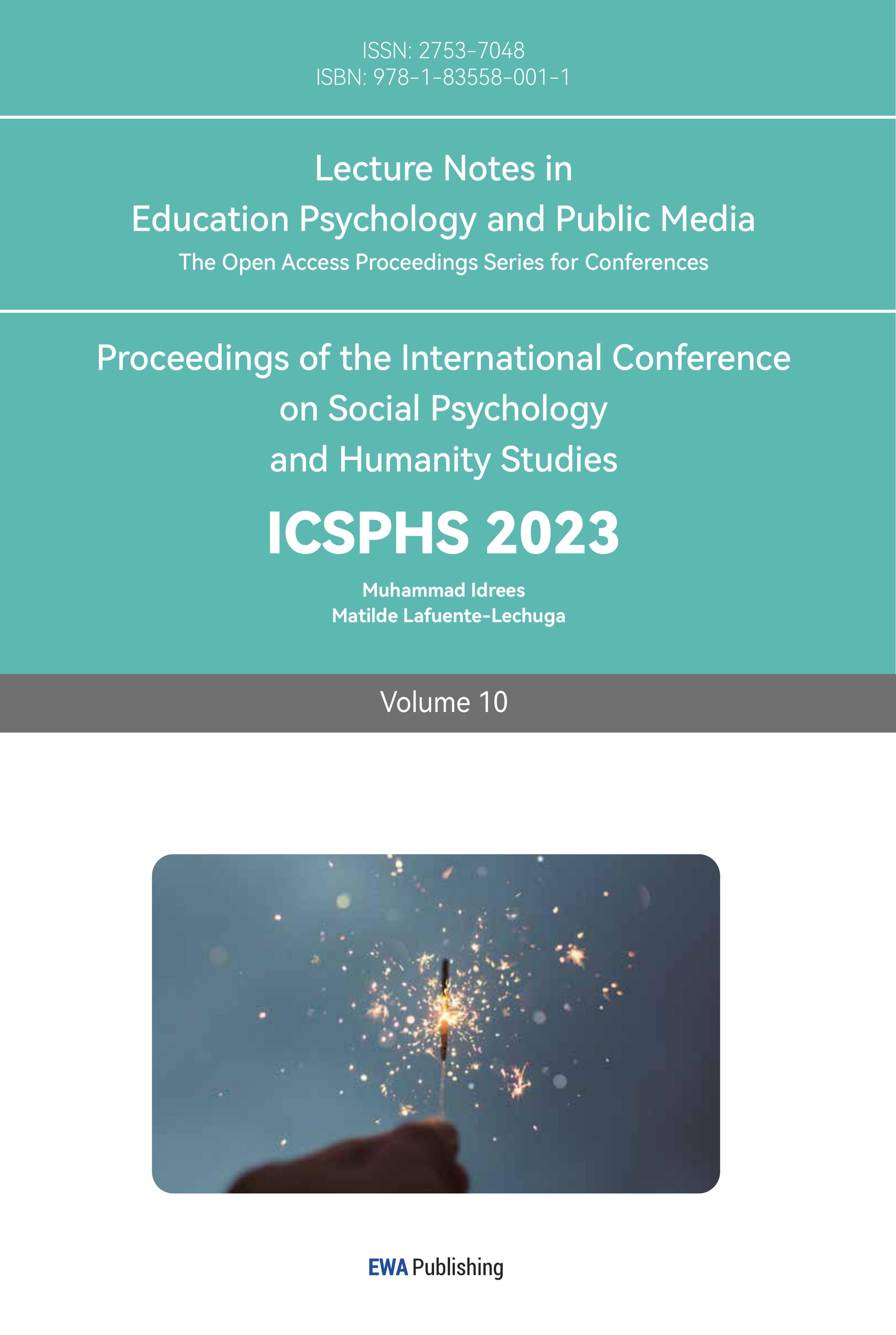References
[1]. Shiyuan Han. (2018) General Theory of Contract Law (Fourth Edition), Law Press, 2018 Edition.
[2]. Xiu Yin. (2014) On the Judicial Application of the Creditor Avoidance System, in Studies in Private Law (Vol. 15), Law Press.
[3]. Shaowei Mao. (2018) Malicious Collusion, Creditor's Right of Avoidance and Legal Consequences of Contract Invalidation - Commentary on the Substantive Law of Supreme People's Court Guiding Case No. 33. Contemporary Law, 2, 14-25.
[4]. Daixiong Yang. (2014) The Legislative Trade-offs of Malicious Collusion: A Perspective on the Relationship between Malicious Collusion, Derogatory Acts and Conspiracy to Misrepresent. Comparative Law Research, 4.
[5]. Supreme People's Court Case Guidance Work Office, Fourth Division of Civil Trial Court. (2015) The Understanding and Reference of "Swiss Cargill International Inc. v. Fujian Jinshi Oil Manufacturing Co. Ltd. and Other Disputes on Confirmation of Contract Invalidation" - Invalidation of Malicious Traditional Debt Evasion. People's Justice, 18, 8-11.
[6]. White R. (1991) Leveraged buyouts and fraudulent conveyance laws under the bankruptcy code-Like oil and water, they just don't mix. [1991] (01) Annual Survey of American Law, 1, 357-432.
[7]. Jay D. (2004) Three-Step/Four Test Analysis of the Uniform Fraudulent Transfers Act (Draft). Retrieved from http://.www.assetprotectionbook.com/ufta-3-4.pdf.
[8]. Peter A.A., Luther M. D. and J.R. (1985) A Critical A-nalysis of The New Uniform Fraudulent Transfer Act.University of llinois Law Review, 527.
[9]. Markell B. (1988) Toward true and plain dealing: A theory of fraudulent transfers involving unreasonably small capita. Indiana Law Review, 21,2.
[10]. White R. (1991) Leveraged buyouts and fraudulent conveyance laws under the bankruptcy code-Like oil and water, they just don't mix. Annual Survey of American Law,01.
Cite this article
Li,Y. (2023). Creditor Protection Mechanism of Debtor's Fraudulent Transfer: Comparing Current Legislation of China and the United States. Lecture Notes in Education Psychology and Public Media,10,307-313.
Data availability
The datasets used and/or analyzed during the current study will be available from the authors upon reasonable request.
Disclaimer/Publisher's Note
The statements, opinions and data contained in all publications are solely those of the individual author(s) and contributor(s) and not of EWA Publishing and/or the editor(s). EWA Publishing and/or the editor(s) disclaim responsibility for any injury to people or property resulting from any ideas, methods, instructions or products referred to in the content.
About volume
Volume title: Proceedings of the International Conference on Social Psychology and Humanity Studies
© 2024 by the author(s). Licensee EWA Publishing, Oxford, UK. This article is an open access article distributed under the terms and
conditions of the Creative Commons Attribution (CC BY) license. Authors who
publish this series agree to the following terms:
1. Authors retain copyright and grant the series right of first publication with the work simultaneously licensed under a Creative Commons
Attribution License that allows others to share the work with an acknowledgment of the work's authorship and initial publication in this
series.
2. Authors are able to enter into separate, additional contractual arrangements for the non-exclusive distribution of the series's published
version of the work (e.g., post it to an institutional repository or publish it in a book), with an acknowledgment of its initial
publication in this series.
3. Authors are permitted and encouraged to post their work online (e.g., in institutional repositories or on their website) prior to and
during the submission process, as it can lead to productive exchanges, as well as earlier and greater citation of published work (See
Open access policy for details).
References
[1]. Shiyuan Han. (2018) General Theory of Contract Law (Fourth Edition), Law Press, 2018 Edition.
[2]. Xiu Yin. (2014) On the Judicial Application of the Creditor Avoidance System, in Studies in Private Law (Vol. 15), Law Press.
[3]. Shaowei Mao. (2018) Malicious Collusion, Creditor's Right of Avoidance and Legal Consequences of Contract Invalidation - Commentary on the Substantive Law of Supreme People's Court Guiding Case No. 33. Contemporary Law, 2, 14-25.
[4]. Daixiong Yang. (2014) The Legislative Trade-offs of Malicious Collusion: A Perspective on the Relationship between Malicious Collusion, Derogatory Acts and Conspiracy to Misrepresent. Comparative Law Research, 4.
[5]. Supreme People's Court Case Guidance Work Office, Fourth Division of Civil Trial Court. (2015) The Understanding and Reference of "Swiss Cargill International Inc. v. Fujian Jinshi Oil Manufacturing Co. Ltd. and Other Disputes on Confirmation of Contract Invalidation" - Invalidation of Malicious Traditional Debt Evasion. People's Justice, 18, 8-11.
[6]. White R. (1991) Leveraged buyouts and fraudulent conveyance laws under the bankruptcy code-Like oil and water, they just don't mix. [1991] (01) Annual Survey of American Law, 1, 357-432.
[7]. Jay D. (2004) Three-Step/Four Test Analysis of the Uniform Fraudulent Transfers Act (Draft). Retrieved from http://.www.assetprotectionbook.com/ufta-3-4.pdf.
[8]. Peter A.A., Luther M. D. and J.R. (1985) A Critical A-nalysis of The New Uniform Fraudulent Transfer Act.University of llinois Law Review, 527.
[9]. Markell B. (1988) Toward true and plain dealing: A theory of fraudulent transfers involving unreasonably small capita. Indiana Law Review, 21,2.
[10]. White R. (1991) Leveraged buyouts and fraudulent conveyance laws under the bankruptcy code-Like oil and water, they just don't mix. Annual Survey of American Law,01.









